How to choose the best yoga mat thickness
The search for the best yoga mat thickness can take you from the extra thick yoga mats that give you more protection for your joints to the ultra thin travel mats made for convenience on the go. With so many options, it's easy to get confused on which is just right for your daily practice.
If you’re reading this, it's likely that you know that a mat is not just something to place between your body and the floor when you work out.
It’s way more than that: your mat is that one essential piece of workout equipment that helps you feel grounded, supported and gives you the right protection for your joints - in addition to being beautiful and inspiring for your practice.

The mat in the photo above is available here.
The ideal mat should match your needs in such a way that you are able to get better and better at your yoga or Pilates practice in the 1+ years of using it – so committing to choose the right one now will most definitely help upgrade your practice in the long term.
Pick a mat that's too thin and you may experience a lot of discomfort in your knees, wrists and ankles when you hold poses for a long time. At the other end of the spectrum, one that is just too thick for you can slow down your movement and keep you from feeling 100% supported – you’ll just hopelessly sink into it.
By the time you’ve finished reading this post you’ll know all the options available to you, have a few myths debunked and be ready to choose the ideal mat according to your practice and personal needs.

Extra thick yoga mats
If you are looking for an extra thick yoga mat, you’ll be spoiled for choice. Most mats that are very thick are made from materials such as PVC or foam, which are the most common materials being used to make exercise mats out there.
Many such mats range from 6mm to as much as 10 or 12 cm in thickness, which is about as thick as a woolen blanket and may well be *too much* for your regular practice. One of the downsides to these mats is that the materials they are made out of are not eco-friendly and therefore may contain toxins that get released into the environment long after the mat has been discarded. Simply put, this may not be the kind of material you’d wish your skin to rub against every day or with every workout, so the best advice for taking care of yourself and our planet would be to avoid mats made out of synthetic materials.

So would 6mm yoga mats and thicker be more comfortable?
In terms of the comfort you’ll get with a 6mm yoga mat (or thicker), any such mat may tend to become too cushion-y with time. Much like a bed that’s way too soft, you’ll have a hard time feeling comfortable, especially when it comes to holding balancing poses or staying in the same pose for a long time. Your hands and feet are likely to simply sink into the mat, making it a chore to fight through so much thickness when you try to go from one pose to the next. At the end of the day, yoga is there to make us feel grounded, which may prove quite hard to achieve when you have too much of a barrier between your body and the ground itself.
The sweet spot: 4mm yoga mats
There are more limited options when it comes to mats made of materials that are kinder to your body and the environment. Luckily, mats that are made from natural materials like natural rubber or cork cannot be too thick, and will therefore keep you more in control of your balance while you practice as well as give you the right grip for not slipping. For instance, DIYogi mats are made from natural rubber, which is a dense natural material extracted from rubber trees. This makes the absolute best material for grip. However, having more than 5mm thickness in natural rubber simply can’t be for a yoga mat – rubber is a heavy, dense material so a thicker natural rubber mat will be way too heavy. Natural rubber provides enough cushioning at 3.5 – 4.5mm and has more density than more common mats so there is no need to go for a thicker mat than that. If travelling with your mat to or from the studio or taking it with you on holiday is important to you, make sure you find a mat that is not too heavy and also comes with a carrying strap to help you take it anywhere.

Travel yoga mats – the super thin version for people with itchy feet
Travel yoga mats tend to be mostly paper thin – somewhere around 2mm in thickness for the majority of them.
You’ll tell a travel mat apart from all the others by the fact that you can fold it easily, so you can take it anywhere with you. The downside? There’s only so much cushioning it can provide; so if you use this mat straight on the floor you are likely to feel it in your wrists after a few yoga sequences or planks, especially when transitioning from downward dog to chaturanga. The reason they are so thin and light is because they do exactly what it says on the tin – their only purpose is to make it easy for you to travel with them. Fold your mat to fit it into your suitcase if you want to stay fit on holiday, or take it from home, to your office, then to your local studio and back home without any hassle. But, while you practice, make sure you have something underneath it such as a carpet or another workout mat to take some of the hardness of the floor away.
Consider the best thickness that will protect your joints
Your joint health also determines the yoga or Pilates mat you need to choose.
- If you need extra cushioning and your mat is too thin, fold it under your knees or wrists when you’re in a more challenging pose so that your joints are protected and you don’t suffer from any pain during or after practice
- Some mats have an extra layer of material inside them to give you that extra joint protection, such as an inner layer of antibacterial cotton that’s there to for added comfort as well as to keep your mat hygienic for longer.
The above should cover you perfectly unless you have a health condition, are working out with an injury or are pregnant. Ask your yoga teacher or even your physician to make sure, especially if you are practicing with swollen ankles, sensitive joints or have certain pain points that you are trying to protect while working out. It’s always best to practice extra care as there is not a one-size-fits-all in terms of yoga or Pilates gear; so make sure you pick what’s best for yourself.

How much of an advanced Yogi are you?
If you are an advanced Yogi then you are likely to be comfortable with holding poses in most environments (yes, I’m talking about all those breath-taking Instagram photos of Yogis doing splits on cliffs!). But for most of us who are either beginners, intermediate or accustomed to a certain standard of comfort when practicing, a yoga mat that’s too thick is just not acceptable; neither is one that is too thin. When your hands and feet start to sink into the surface of your mat you’ll know it’s too thick for sure. Also, most likely a 4mm mat, which is just the optimal thickness for most of us, can give you the support you need to enjoy your practice and progress to the next level or workout goal.
So, what’s the optimal thickness then?
There is no one size fits all, but we’d argue that avoiding the extremely thin mat (2-3mm) and the ultra thick ones (6mm+) is the way to go for most people looking to have a supported and empowering yoga or Pilates practice. A 4-5 mm mat will be the ideal choice for many as it will ensure you keep grounded and balanced whilst having your joints protected. While regular travel mats are much thinner than that, a 4-5mm thick mat is still thin enough to be carried around with ease and taken on holiday, especially if you have a mat carrying strap at hand, which some mats come with. However, please be mindful of your own particular requirements and health condition – if you have an injury, joint sensitivity or are pregnant it may be best to consult with your yoga teacher or a medical professional before you invest in your next mat. Remember that while it’s tempting to choose your mat by colour or pattern, it’s important to find one that is just right for you and make sure you are comfortable for the 1+ years (or lifetime!) of using it. A new yoga mat is truly an investment in yourself and your practice, and most of all it simply has to suit YOU and make you look forward to your next yoga or Pilates session.



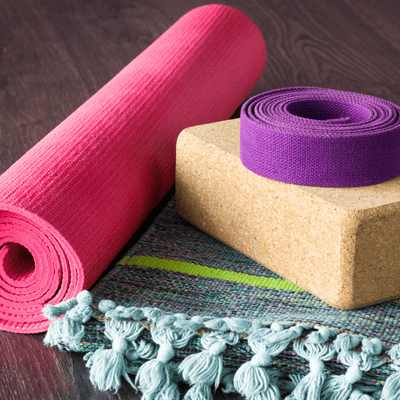
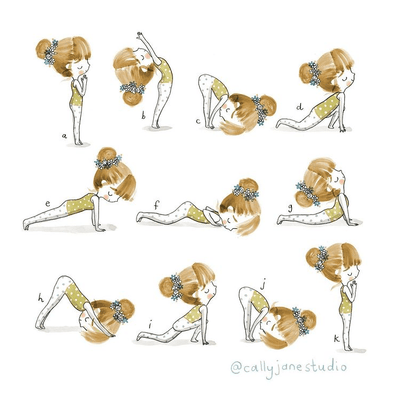
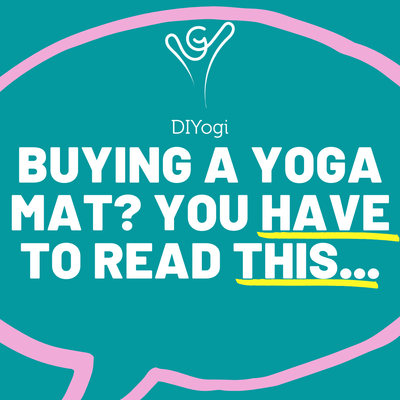
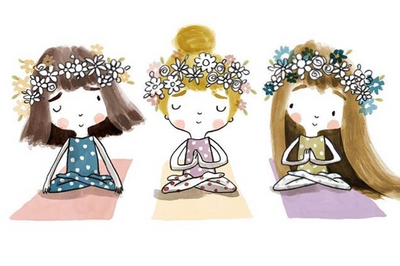
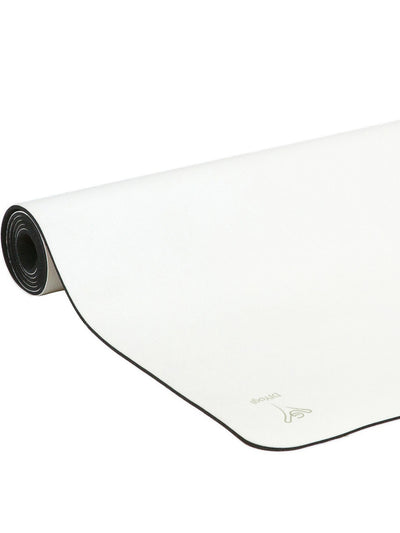
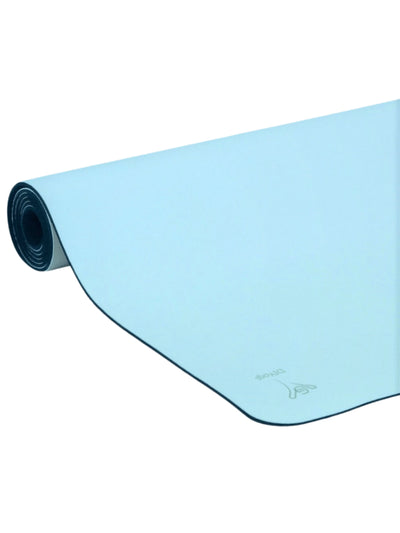
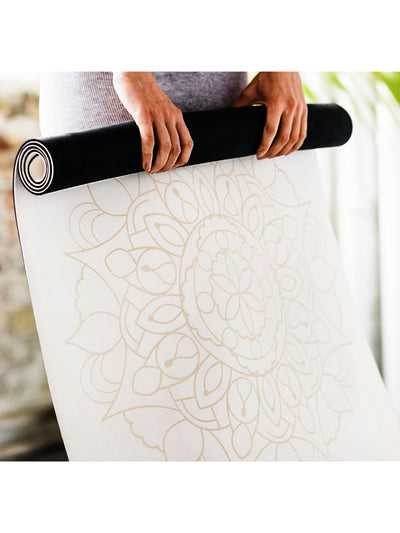
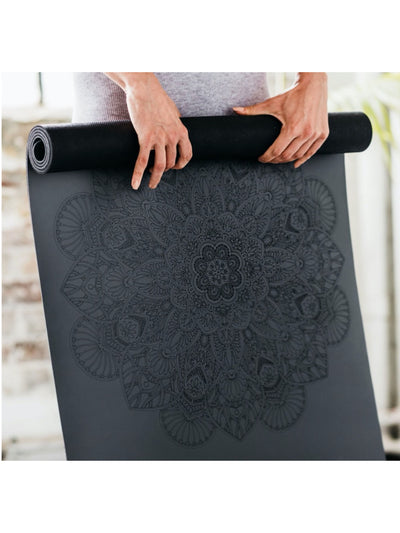
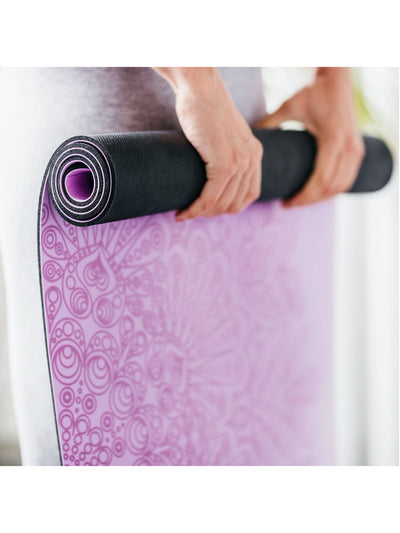
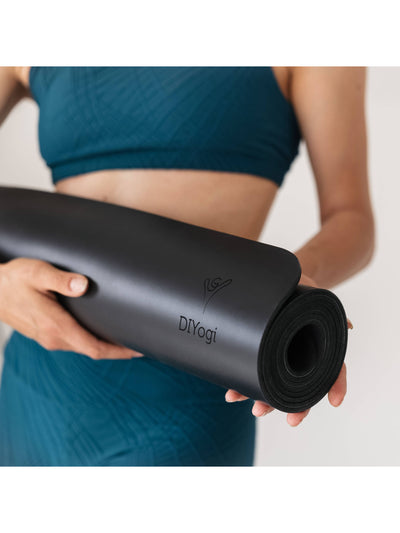
Leave a comment